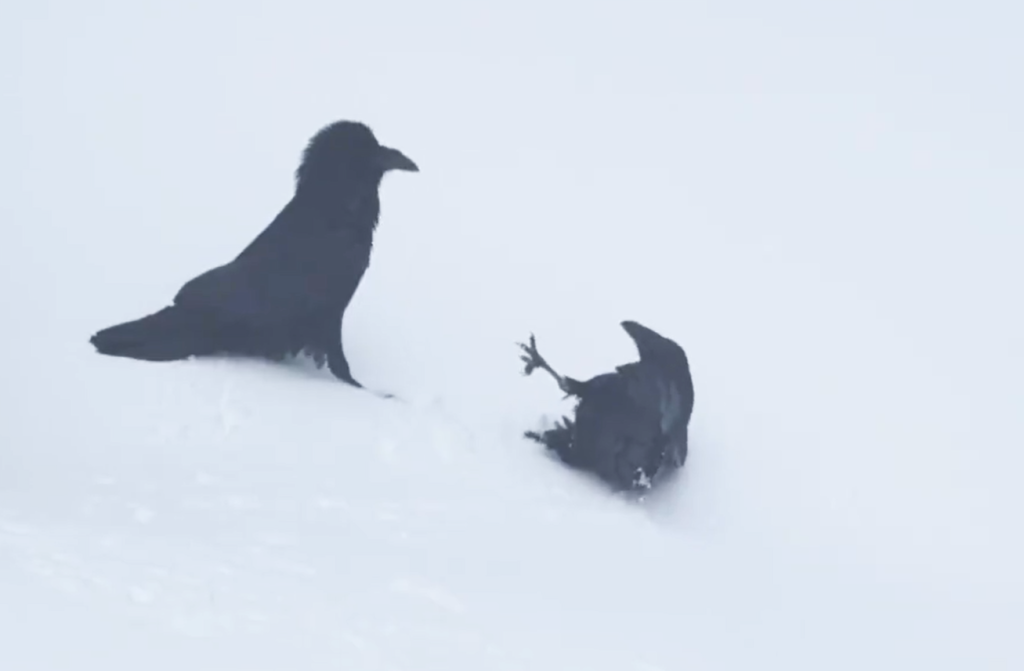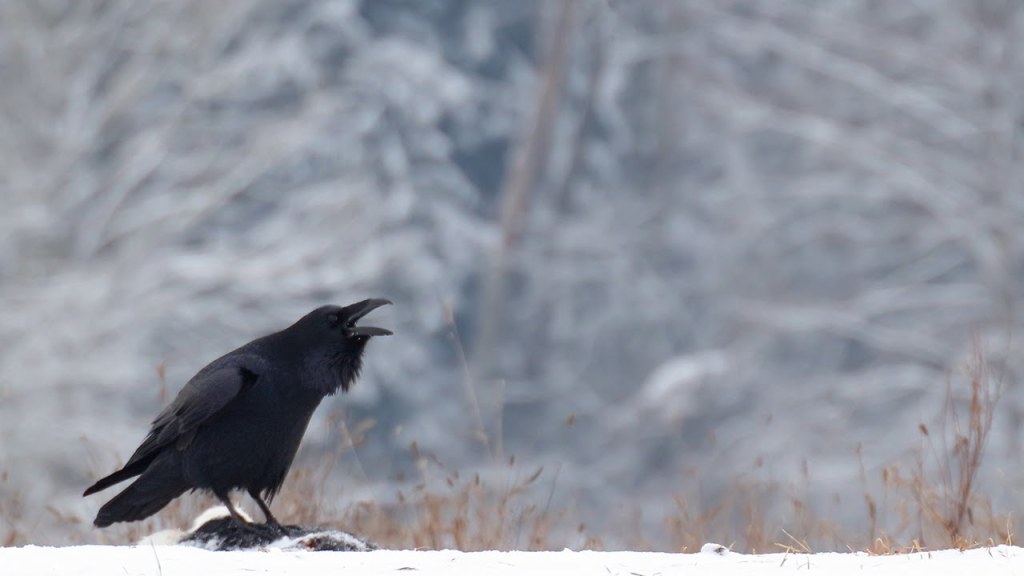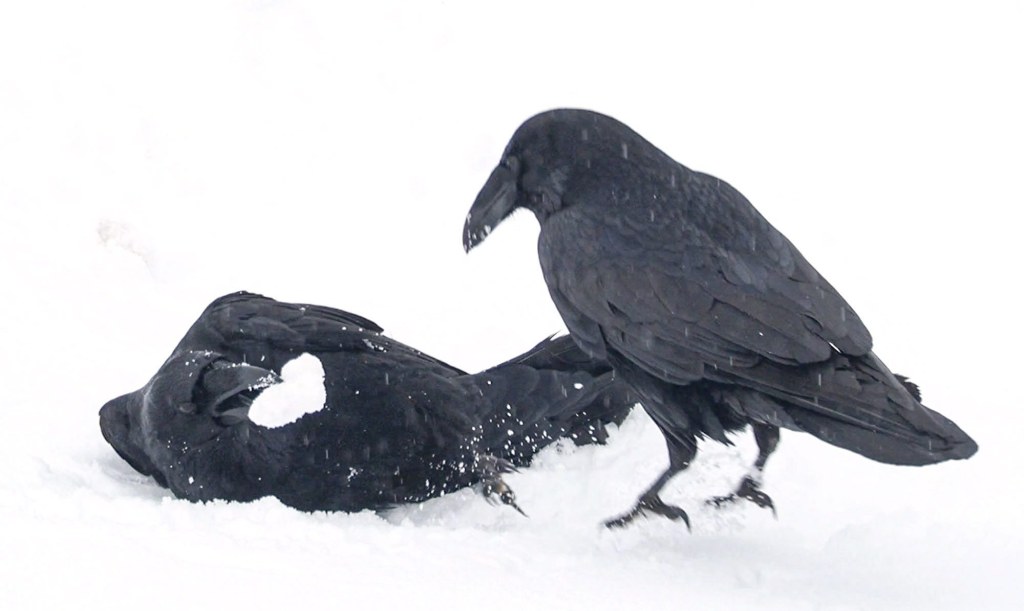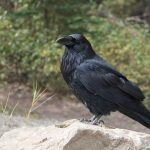Captivating Raven In Snow: Embrace The Enchanting Mystique And Discover The Magic Within!
Raven in Snow: An Enchanting Sight
Introduction
Dear Raven Enthusiast,
3 Picture Gallery: Captivating Raven In Snow: Embrace The Enchanting Mystique And Discover The Magic Within!



Welcome to this article dedicated to one of nature’s most captivating phenomena – the raven in snow. In this piece, we will explore the allure of ravens in snowy landscapes and delve into the intriguing details surrounding these enchanting creatures. Join us as we uncover the mysteries and beauty of the raven in snow.

Image Source: vmcdn.ca
1. What makes ravens in snow so fascinating?
2. Who are the main characters in this snowy tale?

Image Source: ytimg.com
3. When can we witness the ravens in their snowy habitat?
4. Where are the ideal locations to spot ravens in snow?

Image Source: urbannature.blog
5. Why do ravens thrive in snowy conditions?
6. How can we appreciate and protect these magnificent birds?
What Makes Ravens in Snow So Fascinating?
Ravens in snow are a mesmerizing sight that has captivated both nature enthusiasts and scientists alike. These intelligent birds with their glossy black feathers contrasted against the pristine white backdrop of snow create a striking visual spectacle. The combination of their sleek appearance and the serene environment evokes a sense of wonder and awe.
Moreover, ravens are known for their social behavior and high level of intelligence. Watching them interact and navigate through a snowy landscape provides a unique opportunity to witness their resourcefulness and problem-solving abilities.
As scavengers, ravens play a vital role in maintaining ecological balance by cleaning up carrion and preventing the spread of diseases. Their presence in snowy regions contributes to the overall health of the ecosystem.
So, next time you encounter a raven in snow, take a moment to appreciate the beauty and significance of this remarkable creature.
Who Are the Main Characters in This Snowy Tale?
Our story revolves around two main characters – the raven and the snow. The raven, a member of the Corvidae family, is a large black bird known for its intelligence and adaptability. Its distinctive call and striking appearance make it easily recognizable.
The snow, on the other hand, is a product of winter’s cold embrace. It covers the landscape with a pristine white blanket, transforming familiar surroundings into a winter wonderland.
When these two entities come together, they create a captivating scene straight out of a fairytale. The stark contrast between the raven’s dark plumage and the snowy backdrop adds a touch of magic to the entire spectacle.
Stay tuned as we explore the fascinating relationship between these characters and the secrets they hold.
When Can We Witness the Ravens in Their Snowy Habitat?
The ravens’ presence in snowy habitats depends on the region and the prevailing weather conditions. In areas with cold climates, such as northern regions and high altitudes, ravens can be found year-round.
However, in temperate regions, ravens tend to migrate to snow-covered areas during the winter months. The absence of leaves and the abundance of food sources in these regions make them ideal wintering grounds for ravens.
Thus, the best time to witness ravens in their snowy habitat is typically during the winter season. Keep an eye out for these magnificent birds during your winter escapades.
Where Are the Ideal Locations to Spot Ravens in Snow?
Ravens in snow can be found in various locations around the world. Some of the ideal spots to witness these captivating creatures include:
The Arctic tundra: This vast expanse of snow-covered land is home to numerous wildlife species, including ravens. The remote and untouched nature of the Arctic tundra provides a pristine environment for observing ravens in their natural habitat.
Mountainous regions: High-altitude areas, such as the Rocky Mountains and the Alps, offer breathtaking views and an abundance of ravens in snow. The combination of rugged terrain and snowy landscapes creates the perfect setting for encountering these magnificent birds.
Northern forests: Dense coniferous forests in northern regions provide shelter and ample food sources for ravens. These forests, adorned with a layer of snow, offer a picturesque setting to observe ravens as they soar through the trees.
Plan your next adventure to one of these enchanting locations, and you may be rewarded with the sight of ravens gracefully navigating through the snow.
Why Do Ravens Thrive in Snowy Conditions?
Ravens have evolved to thrive in snowy conditions due to their exceptional adaptability and intelligence. The snowy environment presents unique challenges and opportunities for these birds.
One advantage of snowy conditions is the increased visibility. The white backdrop of snow makes it easier for ravens to spot potential food sources or predators from a distance.
Furthermore, the snow acts as an insulator, providing a layer of protection for smaller animals that ravens feed on. This abundance of food sources leads to an increase in the raven population in snowy regions.
Additionally, the availability of nesting sites is enhanced during winter. The bare trees and the structural integrity of snow make it easier for ravens to build nests and raise their young.
These factors, combined with the ravens’ resourcefulness and adaptability, contribute to their thriving presence in snowy conditions.
How Can We Appreciate and Protect These Magnificent Birds?
Appreciating and protecting ravens in snow is crucial for the preservation of these magnificent birds and the ecosystems they inhabit.
1. Create awareness: Spread knowledge about the importance of ravens and their role in maintaining ecological balance. Encourage others to appreciate their beauty and understand their significance.
2. Preserve habitats: Support initiatives that protect and conserve the natural habitats of ravens. This includes advocating for the preservation of pristine snow-covered areas and minimizing human encroachment.
3. Responsible behavior: When encountering ravens in their snowy habitat, maintain a respectful distance to avoid causing unnecessary stress or disturbance. Do not attempt to feed or interfere with their natural behaviors.
4. Support research: Contribute to scientific studies and research efforts focused on understanding the behavior, migration patterns, and population dynamics of ravens. This knowledge can inform conservation strategies and ensure the long-term survival of these birds.
By implementing these measures, we can play our part in appreciating and protecting the mesmerizing raven in snow.
Advantages and Disadvantages of Ravens in Snow
Advantages
1. Ecological balance: Ravens play a crucial role in maintaining the ecological balance of snow-covered regions by scavenging carrion and preventing the spread of diseases.
2. Aesthetic value: The presence of ravens in snow adds a touch of enchantment and beauty to winter landscapes, creating picturesque scenes that are a delight to behold.
3. Behavioral observations: Ravens in snowy environments offer a unique opportunity to observe their resourcefulness and problem-solving abilities as they navigate through challenging conditions.
4. Ecosystem services: Ravens contribute to nutrient cycling by consuming and dispersing seeds, thus supporting the growth and regeneration of plant communities.
5. Cultural significance: Ravens hold cultural significance in various societies and have been featured in folklore, mythology, and literature, adding an element of intrigue and symbolism.
Disadvantages
1. Potential conflicts: In some cases, ravens may come into conflict with human activities, such as predation on livestock or crop damage. These conflicts require careful management to ensure a balance between conservation and human interests.
2. Competition with other species: Ravens’ opportunistic nature can lead to competition with other bird species, especially during winter when resources are limited. This competition may impact the populations of other birds.
3. Noise pollution: Ravens are known for their loud and distinctive calls, which can sometimes be perceived as noise pollution, particularly in urban areas close to their habitats.
4. Nest predation: In certain circumstances, ravens may prey on the nests and eggs of other bird species, potentially affecting their breeding success.
5. Disease transmission: While ravens contribute to carrion cleanup, they can also act as carriers of diseases, posing potential risks to other wildlife and even humans.
FAQs (Frequently Asked Questions)
1. Are ravens and crows the same?
No, ravens and crows belong to the same family (Corvidae), but they are different species. Ravens are larger and have a deeper, more guttural call compared to crows.
2. How can I attract ravens to my backyard during the winter?
Providing a consistent source of food, such as suet or bird feeders, can attract ravens to your backyard during winter. However, ensure that this does not disrupt their natural foraging behaviors or cause dependency.
3. Do ravens migrate?
While ravens can migrate, their migration patterns vary depending on the region. In colder climates, ravens may stay year-round, while those in temperate regions may migrate to snow-covered areas during winter.
4. Can ravens survive in extremely cold temperatures?
Yes, ravens have adapted to survive in cold temperatures. Their thick, insulating feathers, resourcefulness in finding food, and ability to withstand harsh conditions allow them to thrive even in extreme cold.
5. Are ravens endangered?
No, ravens are not currently considered endangered. Their adaptable nature and widespread distribution have enabled them to maintain stable populations. However, localized threats and habitat loss can still impact specific populations.
Conclusion
As we conclude our exploration of the raven in snow, we hope you have gained a deeper appreciation for these magnificent birds and the magic they bring to wintry landscapes. From their striking appearance against a snowy backdrop to their crucial ecological role, ravens in snow embody the beauty and resilience of nature.
Let us continue to marvel at the enchantment of ravens in snow and work towards their protection and preservation. By safeguarding their habitats and fostering a greater understanding of their significance, we can ensure that future generations can also witness the breathtaking sight of ravens gracefully navigating through the snow.
Final Remarks
Disclaimer: The information provided in this article is for educational and informative purposes only. The views and opinions expressed herein are those of the author and do not necessarily reflect the official policy or position of any organization. Readers are encouraged to conduct further research and consult with professionals in the field for specific advice and guidance.
This post topic: Raven



